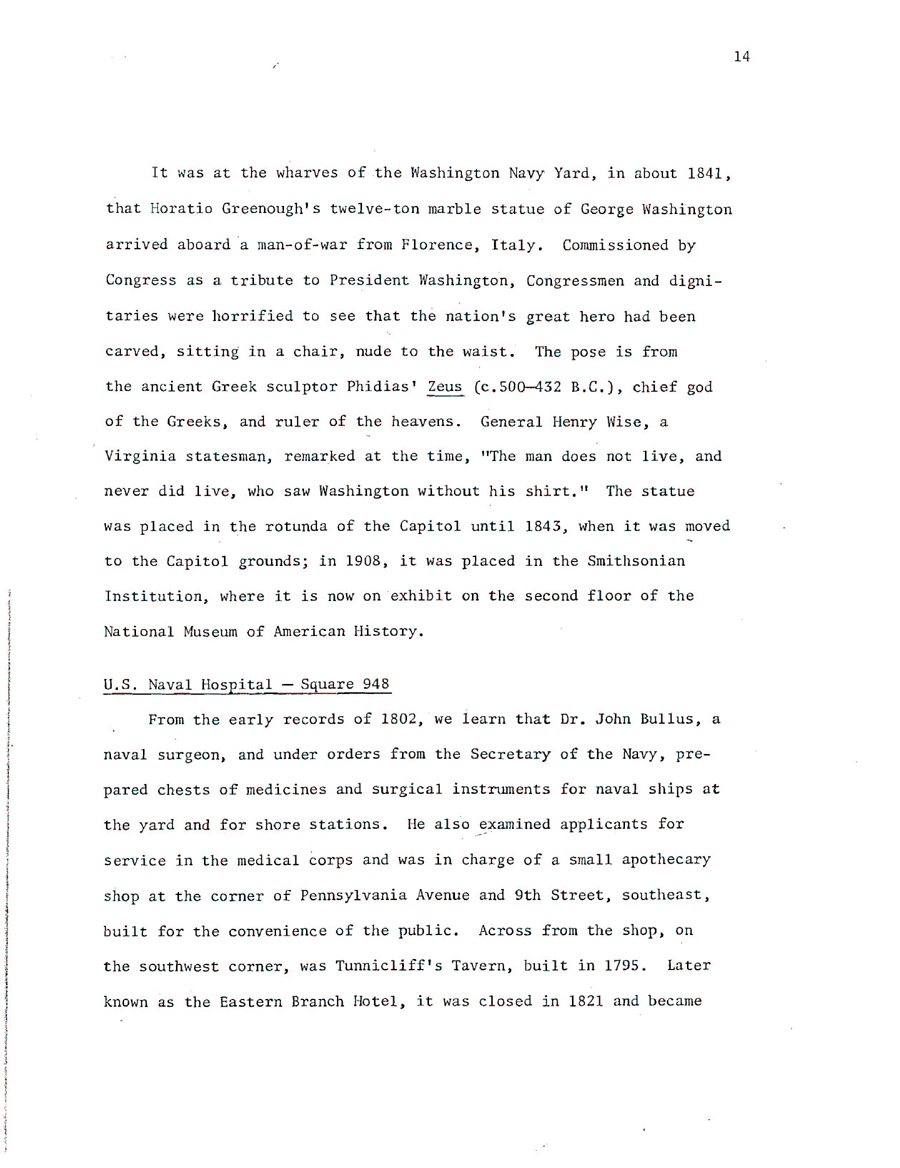

It was at the wharves of the Washington Navy Yard, in about 1841, that Horatio Greenough’s twelve-ton marble statue of George Washington arrived aboard a man-of-war from Florence, Italy. Commissioned by Congress as a tribute to President Washington, Congressmen and dignitaries were horrified to see that the nation’s great hero had been carved, sitting in a chair, nude to the waist. The pose is from the ancient Greek sculptor Phidias’ Zeus (c. 500-432 B.C.), chief god of the Greeks, and ruler of the heavens. General Henry Wise, a Virginia statesman, remarked at the time, “The man does not live, and never did live, who saw Washington without his shirt.” The statue was placed in the rotunda of the Capitol until 1843, when it was moved to the Capitol grounds; in 1908, it was placed in the Smithsonian Institution, where it is now on exhibit on the second floor of the National Museum of American History.
From the early records of 1802, we learn that Dr. John Bullus, a naval surgeon, and under orders form the Secretary of the Navy, prepared chests of medicines and surgical instruments for naval ships at the yard and for shore stations. He also examined applicants for service in the medical corps and was in charge of a small apothecary shop at the corner of Pennsylvania Avenue and 9th Street, southeast, built for the convenience of the public. Across form the shop, on the southwest corner, was Tunnicliff’s tavern, built in 1795. Later, known as the Eastern Branch Hotel, it was closed in 1821 and became continued on page 17)
This site is sponsored by the Friends of the Old Naval Hospital
Last updated November 22, 2008